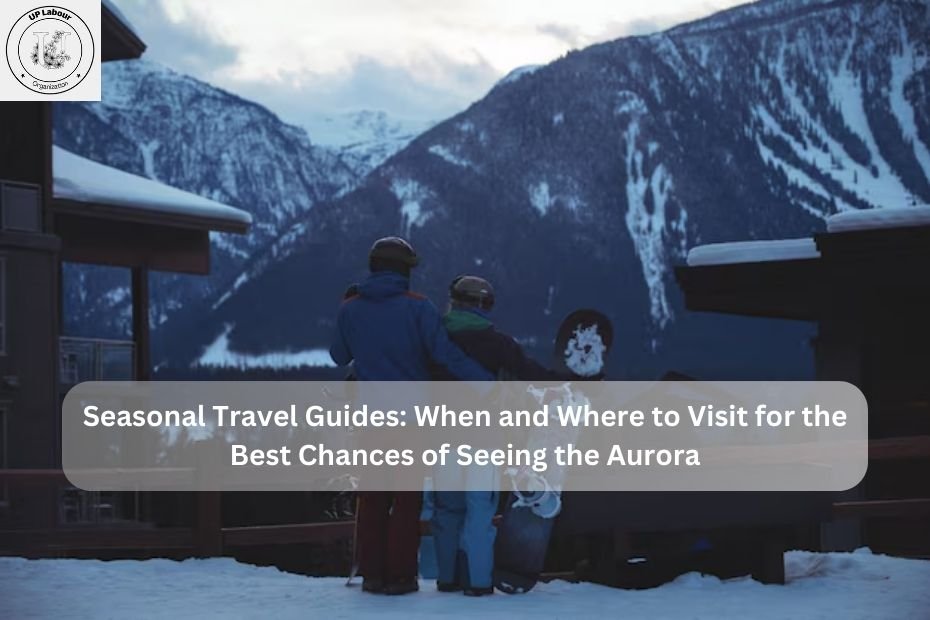Experiencing the Northern Lights, or Aurora Borealis, is on many people’s bucket lists. These stunning, colorful lights dancing across the night sky are a natural wonder that leaves viewers in awe. But catching a glimpse of the aurora is not as simple as stepping outside; it requires a bit of planning, especially regarding timing and location. In this article, we’ll explore the best times of year to see the Northern Lights, the best places to visit, and some tips to enhance your aurora viewing experience.
Understanding the Northern Lights
Before diving into travel specifics, let’s briefly touch on what the Northern Lights are. The aurora borealis occurs when charged particles from the sun collide with gases in the Earth’s atmosphere. This interaction produces beautiful, shimmering waves of light, usually in green, purple, and pink hues. While the aurora is visible in several places around the world, including Norway, Sweden, and Canada, this article will focus on the best spots in the USA.
The Best Time to See the Northern Lights
Timing is crucial when planning your aurora adventure. The Northern Lights can be seen at various times throughout the year, but certain months provide better chances for viewing.
Fall (September to November)
Why Visit: Fall is an excellent time to view the Northern Lights, especially in late September and October. The nights are getting longer, and the weather is often milder compared to winter.
Best Locations:
- Alaska: Fairbanks is a popular choice for aurora hunters in the fall. The clear skies and minimal light pollution make it ideal for viewing. You can also visit Denali National Park, where the scenery adds to the experience.
- Minnesota: The Boundary Waters Canoe Area Wilderness offers dark skies perfect for observing the auroras, along with a breathtaking natural backdrop.
Winter (December to February)
Why Visit: Winter is peak season for Northern Lights sightings. The long, dark nights provide extended viewing opportunities, and the cold air often leads to clearer skies.
Best Locations:
- Alaska: Fairbanks remains a top choice. Many tour companies offer packages that include guided aurora viewings and warm shelters to keep you comfortable.
- Iceland: While technically not in the USA, many travelers hop over to this island nation from the mainland for fantastic views. However, you should plan to spend more time in Alaska if you want a purely U.S. experience.
Spring (March to May)
Why Visit: Spring can also be a great time to see the Northern Lights, particularly in March. The nights are still long, and the weather starts warming up, making it more comfortable for viewing.
Best Locations:
- Alaska: March is a fantastic month in Fairbanks, and you can still enjoy the winter scenery.
- North Dakota: The International Peace Garden area near Dunseith is another great spot, with dark skies and fewer crowds.
Summer (June to August)
Why Visit: While summer is not the ideal time for viewing the Northern Lights due to the midnight sun, it is still possible to catch glimpses of the aurora, especially in late August.
Best Locations:
- Alaska: The northern parts of Alaska may offer some sightings, especially as the nights begin to lengthen in late August.
- Maine: Northern Maine can occasionally have aurora activity in summer months, particularly around the end of August.
Best Locations in the USA for Viewing the Northern Lights
Now that you know the best times to visit, let’s discuss the top locations in the USA where you can experience this natural phenomenon.
1. Fairbanks, Alaska
Overview: Fairbanks is considered one of the best places in the world to view the Northern Lights. With clear, dark skies and ample aurora activity, it attracts photographers and travelers alike.
What to Do: Beyond aurora viewing, you can visit the Museum of the North, soak in hot springs, or enjoy local cuisine.
Tips: Check the aurora forecast and try to stay for at least three nights to increase your chances of seeing the lights.
2. Anchorage, Alaska
Overview: While not as optimal as Fairbanks, Anchorage offers great viewing opportunities, especially if you’re looking for more urban amenities.
What to Do: Explore the city’s vibrant arts scene, visit local breweries, or take a day trip to nearby national parks.
Tips: Drive to nearby areas like Flattop Mountain for darker skies if the city lights obstruct your view.
3. Denali National Park, Alaska
Overview: Denali National Park is not only home to North America’s tallest peak but also provides incredible aurora viewing opportunities.
What to Do: Hike, camp, or take a wildlife tour. The park’s vastness enhances your chance of seeing the lights without light pollution.
Tips: Plan a stay at a lodge within the park for the best chances and a cozy retreat.
4. Minnesota’s Boundary Waters
Overview: This wilderness area offers remote locations for stunning aurora views away from city lights.
What to Do: Canoe, hike, and enjoy the serenity of nature. The isolation adds to the magic of the Northern Lights.
Tips: Bring warm clothing and plan for camping or cabin rentals to enjoy the area fully.
5. North Dakota
Overview: North Dakota may not be the first place that comes to mind for aurora viewing, but it has its share of breathtaking nights.
What to Do: Visit Theodore Roosevelt National Park for a chance to see both wildlife and the auroras.
Tips: Check out the International Peace Garden for open skies and minimal light interference.
6. Maine’s Aroostook County
Overview: Northern Maine offers dark skies and a chance to see the auroras, especially in late summer and fall.
What to Do: Explore local farms, visit charming small towns, and enjoy outdoor activities in beautiful landscapes.
Tips: The St. John Valley is particularly well-known for good viewing conditions.
Tips for a Successful Northern Lights Adventure
Seeing the Northern Lights is often about patience and preparation. Here are some tips to enhance your experience:
1. Dress Warmly
When venturing out to view the Northern Lights, especially in winter, dress in layers. Thermal underwear, insulated jackets, gloves, and hats are essential. You want to stay warm while waiting for the lights to appear.
2. Choose Your Location Wisely
Opt for places away from city lights, as light pollution can significantly diminish your chances of seeing the auroras. Research local spots known for aurora activity, and consider guided tours that offer transportation to the best viewing areas.
3. Check the Weather
Clear skies are essential for viewing the auroras. Keep an eye on local weather forecasts and aurora alerts. Many websites and apps offer real-time aurora forecasts that can help you make last-minute decisions about where to go.
4. Be Patient
Aurora activity can be unpredictable. Sometimes, you may have to wait hours for a good display. Bring snacks, hot drinks, and even a comfy chair or blanket to stay cozy during your wait.
5. Capture the Moment
If you plan to photograph the Northern Lights, bring a tripod and learn how to adjust your camera settings for night photography. Experiment with long exposure times to capture the vibrant colors of the auroras.
6. Embrace the Experience
While seeing the Northern Lights is magical, don’t forget to appreciate the whole experience. Enjoy the peacefulness of the night sky, the beauty of your surroundings, and the company of friends or family.
Conclusion
Experiencing the Northern Lights is a remarkable adventure that requires planning and a bit of luck. By understanding the best times to visit, knowing where to go, and preparing for the experience, you can increase your chances of witnessing this stunning natural phenomenon. Whether you choose to travel to Alaska, Minnesota, or North Dakota, the aurora borealis is waiting to enchant you with its mesmerizing dance across the night sky. So pack your bags, dress warmly, and get ready for a journey you’ll never forget!

